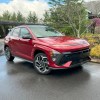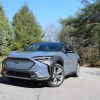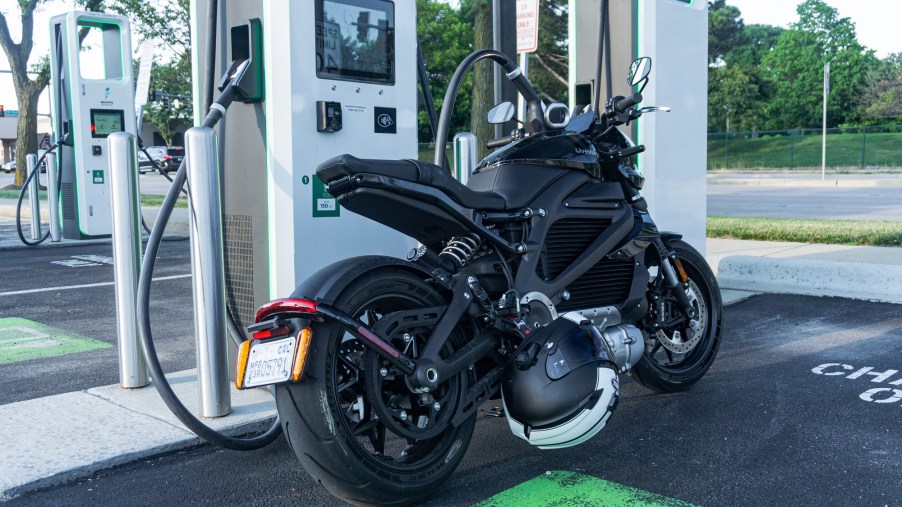
Is the 2022 LiveWire One Prepared for Public Charging Stations?
2022 LiveWire One public charging station review highlights:
- You can fully recharge the 2022 LiveWire One using a Level 1 outlet or Level 2 station overnight, or in about an hour with a Level 3 station
- Although Harley-Davidson’s charging speed claims for the LiveWire One are mostly accurate, I experienced multiple communication faults while trying to use an Electrify America charging station
- While the One can use public chargers, unless you’re taking the bike on long-distance rides—which it’s not designed for—they’re not absolutely necessary
Cutting your ride short to fill up your motorcycle’s tank is annoying at best, but it usually only takes a few minutes. Charging an electric bike like the 2022 LiveWire One, though, eats up far more time than that. However, in theory, plugging into a public Level 3 charging station helps riders avoid a huge chunk of that wait time. But as I discovered when I took my LiveWire One test bike to one of these stations, not all theories translate smoothly to reality.
How do you charge the 2022 LiveWire One?
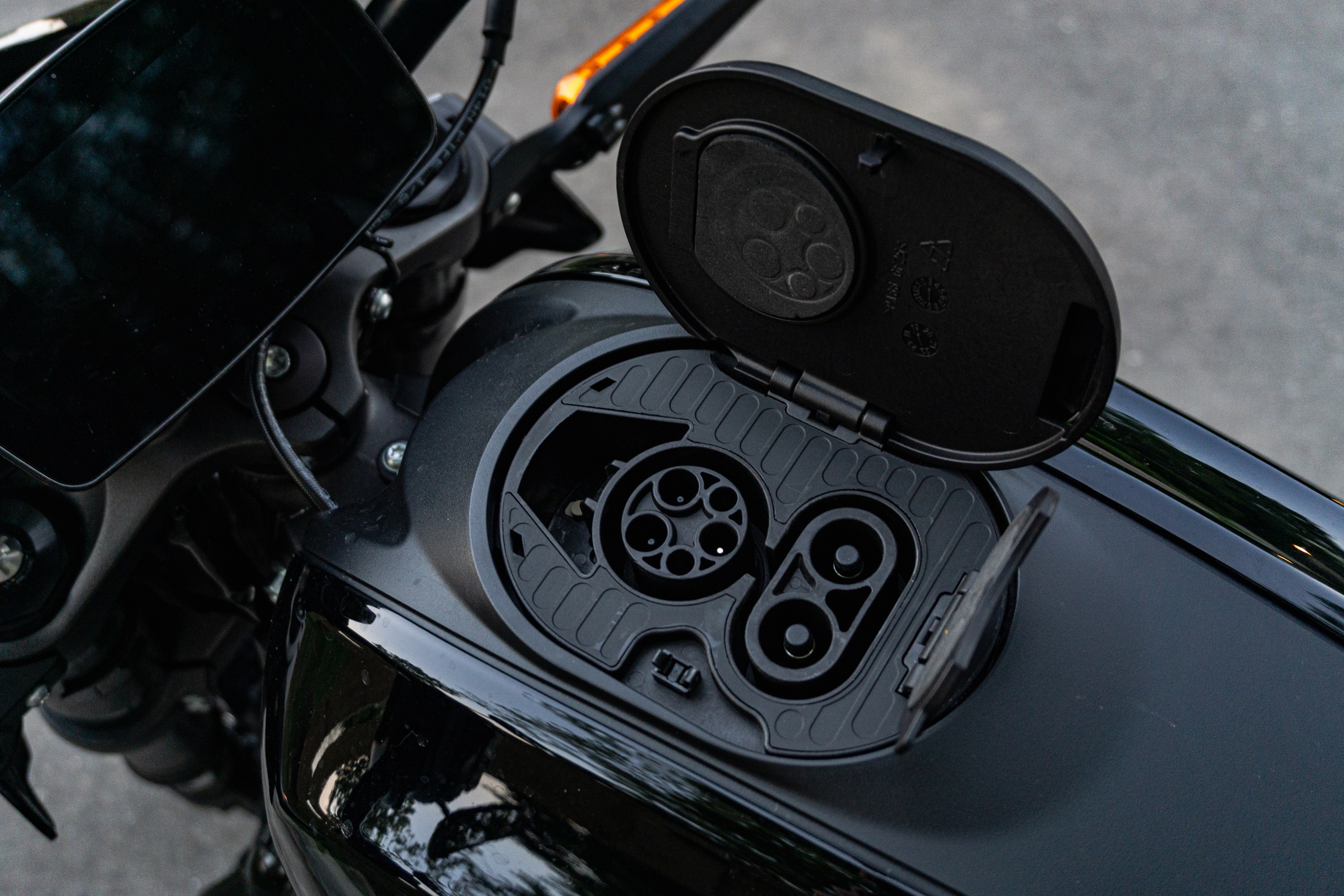
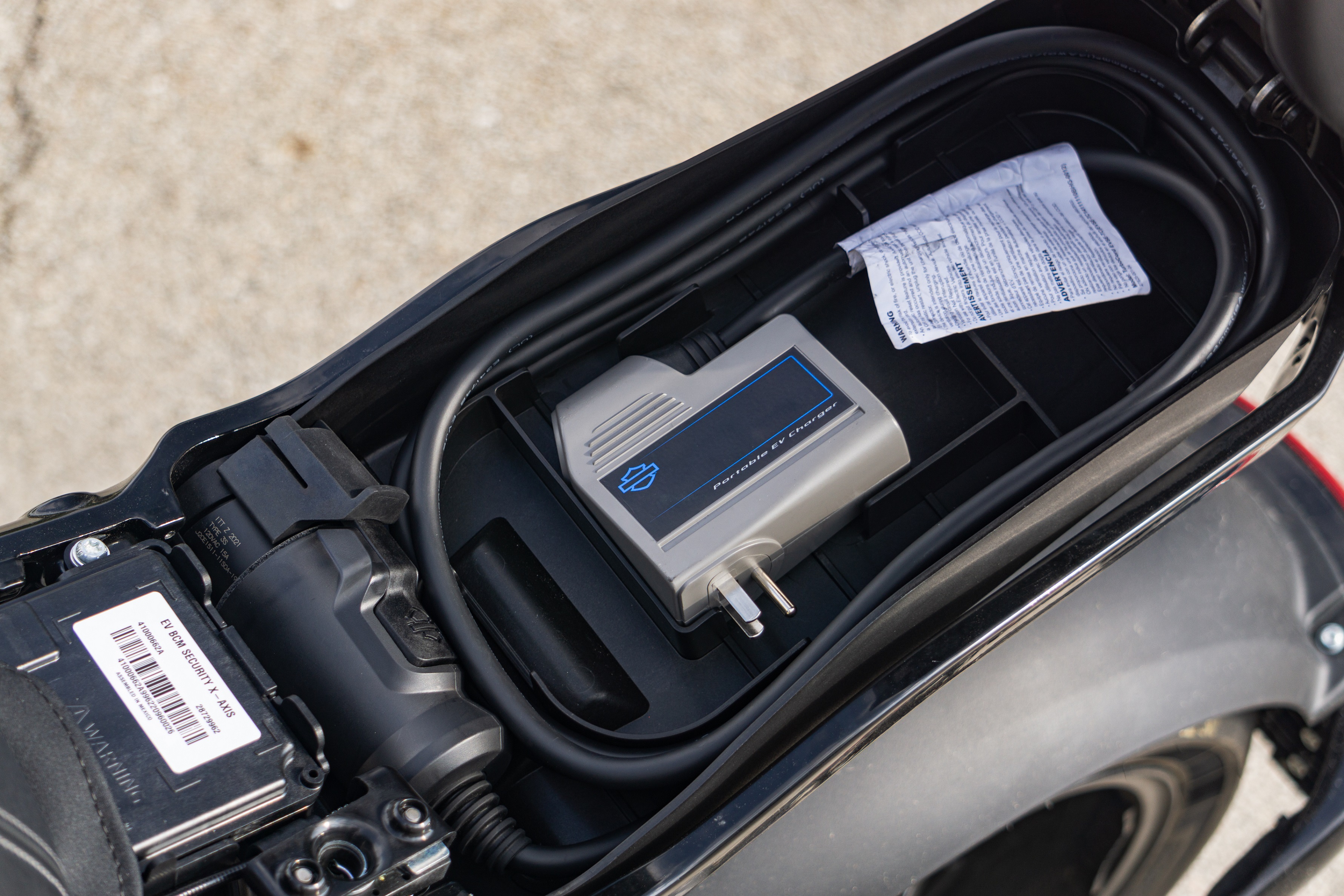
Like all electric motorcycles, the 2022 LiveWire One can recharge from a conventional home outlet, i.e., a Level 1 source. LiveWire ships each One with a charger cord in the bike’s specially-shaped under-seat storage area. Just plug the cord into your outlet, then stick the other end into the bike, and you’re good to go.
In addition, the LiveWire One accepts power from Level 2 charging stations, whether at home or in public. However, unlike, say, a Zero SR/F, the One doesn’t benefit from a Level 2 outlet’s higher voltage and current. As I’ll detail shortly, the electric Harley-Davidson recharges just as fast via a Level 1 outlet as it does from a Level 2 one. But therein lies the silver lining: you don’t need to invest thousands of dollars in a home charging station.
The 2022 LiveWire One does have one charging advantage over many other street-legal electric motorcycles, though. Notice the charging port where the gas cap would be on an internal-combustion bike in the photo above? That’s a Combined Charging System (CCS) port with two extra pins for DC fast-charging computability hidden under a flap. That means the One can use any Level 3 charging station with a CCS outlet, which is virtually every non-Tesla station in the U.S.
Because Level 3 charging stations pump vastly more current and power into EVs, you can’t just plug your LiveWire One in and walk away. First, you must securely lock the charging cable in place. Next, the station and bike communicate electronically to make sure neither has any faults. And if either system detects any issues, the motorcycle won’t charge.
Finally, don’t worry if you need to charge the LiveWire One in stormy weather. Firstly, its charger cord has a NEMA 6P rating, which is the equivalent of an IP67 rating. In other words, it’s watertight. Secondly, like other EVs, it automatically shuts down if there’s a short circuit issue.
What are charging times like on the 2022 LiveWire One?
As noted earlier, the 2022 LiveWire One doesn’t care if it’s plugged into a Level 1 or Level 2 power source. It charges at the same speed on both: 13 miles/hour of charging time. Based on its 146-mile city range, that’s about nine percent every hour. That doesn’t sound fast, but because the One only has a 15.4-kWh battery, that essentially means it fully recharges overnight.
In my experience, that charging speed claim is fairly accurate. During my time with the LiveWire One, I plugged it into my home outlet twice. And my average charging speed was 12.1 miles/hour, about 93% of the claimed speed. Plus, keep in mind that EVs typically throttle charging speeds down once the battery is almost full to prevent damage.
That explains the 2022 LiveWire One’s charging speeds at Level 3 stations:
- 0-80%: 40 minutes
- 0-100%: 60 minutes
Because the One’s battery wasn’t fully depleted when I visited a public Level 3 charger, I can’t verify those exact claims. It’s worth noting, though, that it took RideApart 75 minutes to fully recharge its LiveWire One at a Level 3 charger. However, I can say that it took 14 minutes for my test bike’s battery to go from 65-84%. Also, going from 65-100% took 37 minutes.
But charging at a Level 3 station has as much to do with the charger itself as the EV plugged into it. If the station decides to send over more power, you’ll be done quicker; if it sends less, be prepared to wait. And while it only took 37 minutes to recharge the One, it and I were standing at the station for far longer than that.
Charging the LiveWire One at a public station is harder than it looks
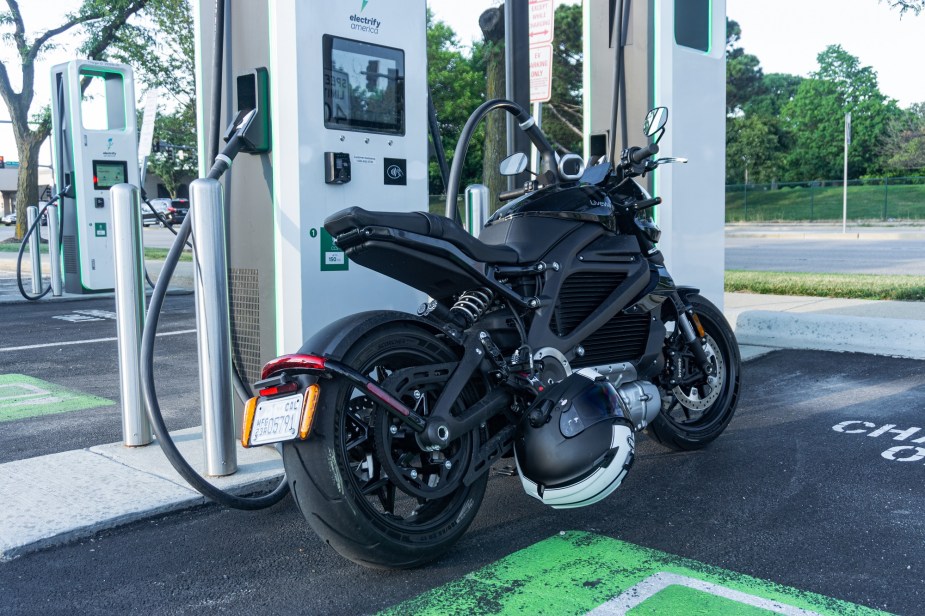
For the sake of consistency and convenience, I took the 2022 LiveWire One to the same Electrify America charging station I took my Chevrolet Bolt EUV tester. By this point, I thought I was prepared for card reader errors and the necessity of getting payment information through quickly. Yet I wasn’t prepared for everything.
Remember how DC fast chargers communicate with EVs before letting the power flow? Well, the chargers at this station and the LiveWire One couldn’t talk civilly with each other. I’d plug the bike into one charger, wait a few moments, and see ‘EVSE Fault’ or some other communication error message pop up on the TFT screen. This happened multiple times across multiple different chargers.
But wait, there’s more. Eventually, I got one of the charging stations to sync up with the LiveWire One—for about 5 minutes. The bike started charging, the power input ramped up…and then some kind of error stopped the whole process. And this wasn’t an isolated incident: it happened again after I changed chargers.
Ultimately, I did get the LiveWire One to accept a charge from one of the CCS Electrify America chargers. But it took several attempts at six different chargers across 40-45 minutes before that happened. And I’m not the only LiveWire rider to experience these kinds of problems: RevZilla did, too, across multiple station brands.
Is charging the electric Harley in public worth the hassle?
Given that I had no faults when charging the 2022 LiveWire One at home, I’m forced to conclude that my issues were station software-related. Admittedly, these problems stem from the motorcycle and charger trying to keep me and everyone else safe. But still, it took me longer to start charging the bike than the bike took to actually charge. And that ‘EVSE Fault’ message is about as helpful as a Check Engine Light.
So, if I owned a 2022 LiveWire One, would I take it to a public charging station on a regular basis? Unless I had to, probably not. At least, not until these software quirks get ironed out.
Firstly, to prevent premature battery degradation, Harley-Davidson recommends doing four Level 1 charges for every one Level 3 charge. So, why not avoid the headache and just stick to Level 1 charging? Secondly, the One is an urban bike, not a highway tourer. This further reduces its hypothetical need to use a public charger. And if I’m just using it to ride around town, charging at home overnight isn’t a problem.
Now, if you can’t charge at home for some reason, you can bring the 2022 LiveWire One to a charging station. Plus, the Level 3 charging times are very convenient for mall shopping trips. But give yourself some extra time, just in case.
Follow more updates from MotorBiscuit on our Facebook page.
